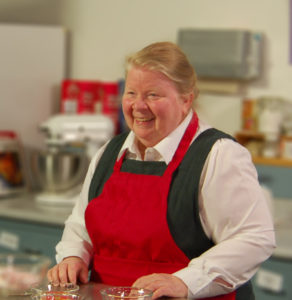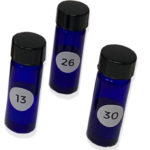
The Scents of Tea project has actually been many years in the making. In 2010, Scott Svihula introduced me to the concept of scent kits for tea when I assisted him with a workshop at World Tea Expo.
The workshop was designed so that participants tasting different teas could match the flavors they experienced with the aroma from several plant extracts that Scott and friends had developed. I was intrigued by the notion of creating a scent kit but was not prepared to launch a serious effort. Although I had retired from Cornell University* at the end of that year, they hired me back and had me developing and teaching several new courses.
Fast forward to World Tea Expo 2018. Now I was fully retired, had written the first version of my first book on tea, and had begun to grasp the various processes that yield the different aromas in tea. And I had sourced some of the aromas for my presentations. Time to meet up with Scott again, and get this project going!
First step: figuring out what aroma chemicals are in teas. After a massive literature search, I had a huge list—the number of volatiles in teas is in the hundreds! Scott quickly told me that the list was impractical. But how to cut it down?
One way was to figure out which chemicals were common to all teas, and the other was to figure out which ones were characteristic for a given tea type, and then to match the chemicals with common descriptions of the aromas of teas. For example, green tea tends to have a characteristic green grassy quality. From working on my first book, I knew that there were two main compounds in green tea that convey this quality, so we decided that these compounds should be in the kit. As it turns out, one of these, hexanal, is present to one degree or another in all teas. Fantastic when it came to figuring out which aromas to include in a smaller kit!
And so it went—going back and forth between descriptions of the aromas of the teas and figuring out which compounds to include and which to exclude. I had aromas sent to Scott, who then told me what the aroma reminded him of, and in which tea he found it. Then we would see how it fit within the overall system we were creating—redundancies had to be eliminated, each tea type had to be adequately represented, and we had to keep an eye on cost as well. At some points, Scott took the lead in finding scents and sent them to me for evaluation. When we had decided on a given aroma between us, Scott took the aroma to others to confirm what we experiencing. Needless to say, we made many many lists, which were then culled, tested, and culled again.
Our initial aim was to have just specific chemicals in the kit, but we ran into two snags in the pursuit of this goal.

One snag was what to do about the “seashore/marine” odor found in many green and oolong teas. This odor is caused primarily by sulfide chemicals, for example, dimethyl sulfide. We quickly realized that we wouldn’t be able to include dimethyl sulfide in any kit—it explodes. However, the aroma is close to that of dimethyl sulfoxide (DMSO), so Scott sent me a very diluted sample, wrapped and double wrapped. I opened it for a quarter second and sent it right back into its wrappings—it stank. Not only that, the smell overwhelmed all the other smells around it. We settled for an extract of seaweed that has these chemicals in it, but at safe and tolerable levels. Further, the composition of the seaweed extract is actually quite close to that of green teas, so the seashore smell is “in context.”
Context is critical and brings us to the next snag, which comes from the fact that when we smell a tea, we smell all the volatiles together; then our brain makes “odor objects” of combinations of these chemicals. Take jasmine, an aroma that occurs naturally in green teas and oolongs: there is no single chemical in either tea or flower that gives a true “jasmine” smell. Instead, it is a mixture of chemicals that we combine together in our brain as “jasmine.” We could have chosen to include the complete mixture, aka “jasmine absolute,” in the kit, but then we would have had to charge upwards of $1,000 for a kit—jasmine absolute is fiercely expensive, as any perfumer knows. So we settled for a chemical that is in both tea and flower that is reminiscent of jasmine.
Another aim was to create kits that linked characteristic scents with processing steps. While we recognize that processing is hardly a linear process, we thought that bringing scent and processing steps together would help you understand how particular scents come into (and out of) existence. This approach lent itself to the creation of the Scents of Tea Fan, an integral element of the kits. While arriving at the concept of the fan was quite straightforward, it took much trial and many errors before it came out the way it did. Just choosing which design program to use was quite an effort. For those of you who are Mac geeks, the best program turned out to be the simplest…Pages!
Creating this kit together is a dream come true for Scott and me. We hope you enjoy using it as much as we enjoyed creating it for you!
*Virginia Utermohlen Lovelace MD is a Board-certified pediatrician and retired faculty member of the Division of Nutritional Sciences at Cornell University, Ithaca, New York, the world’s premier nutrition faculty.
Congratulations Virginia! A great addition for our tea journey.